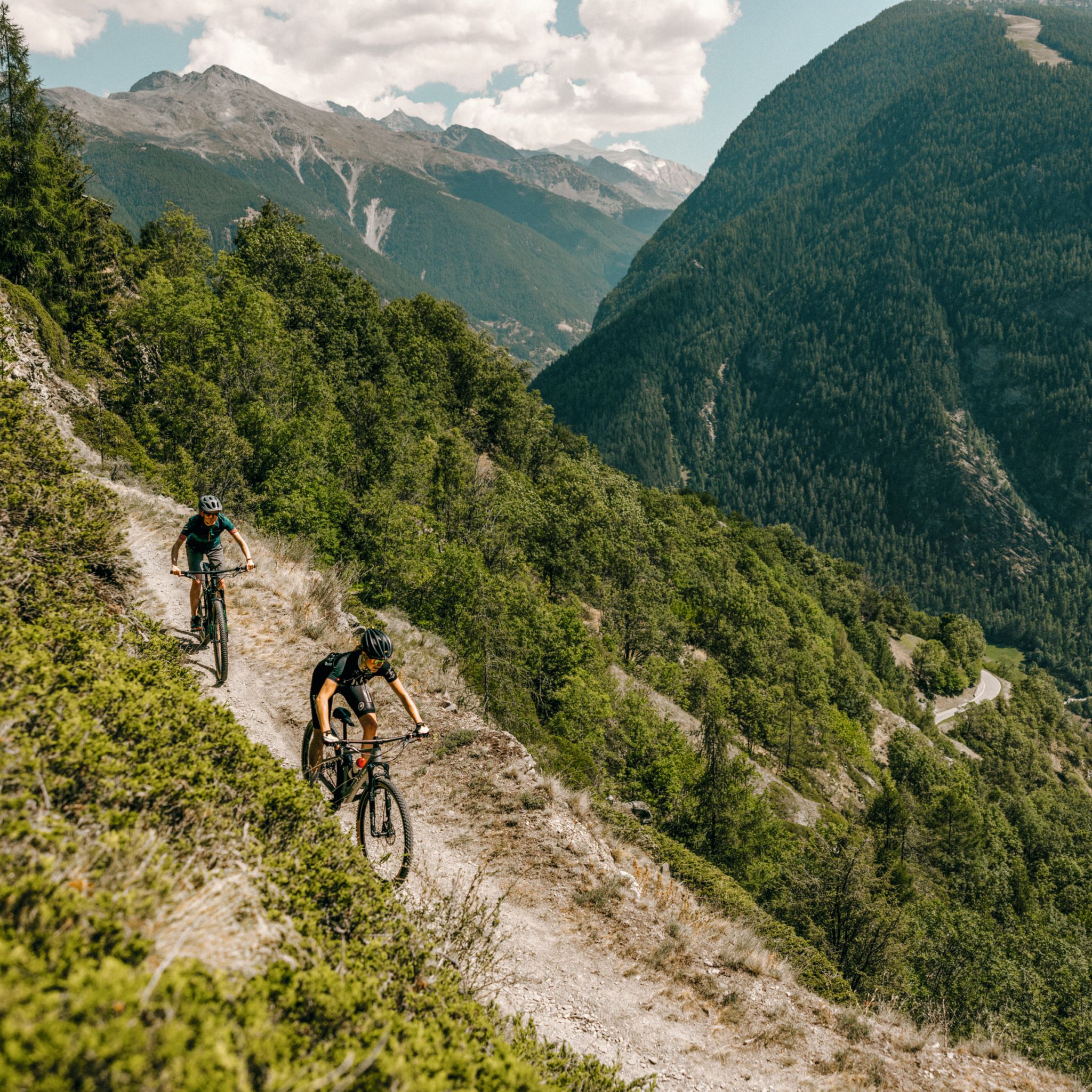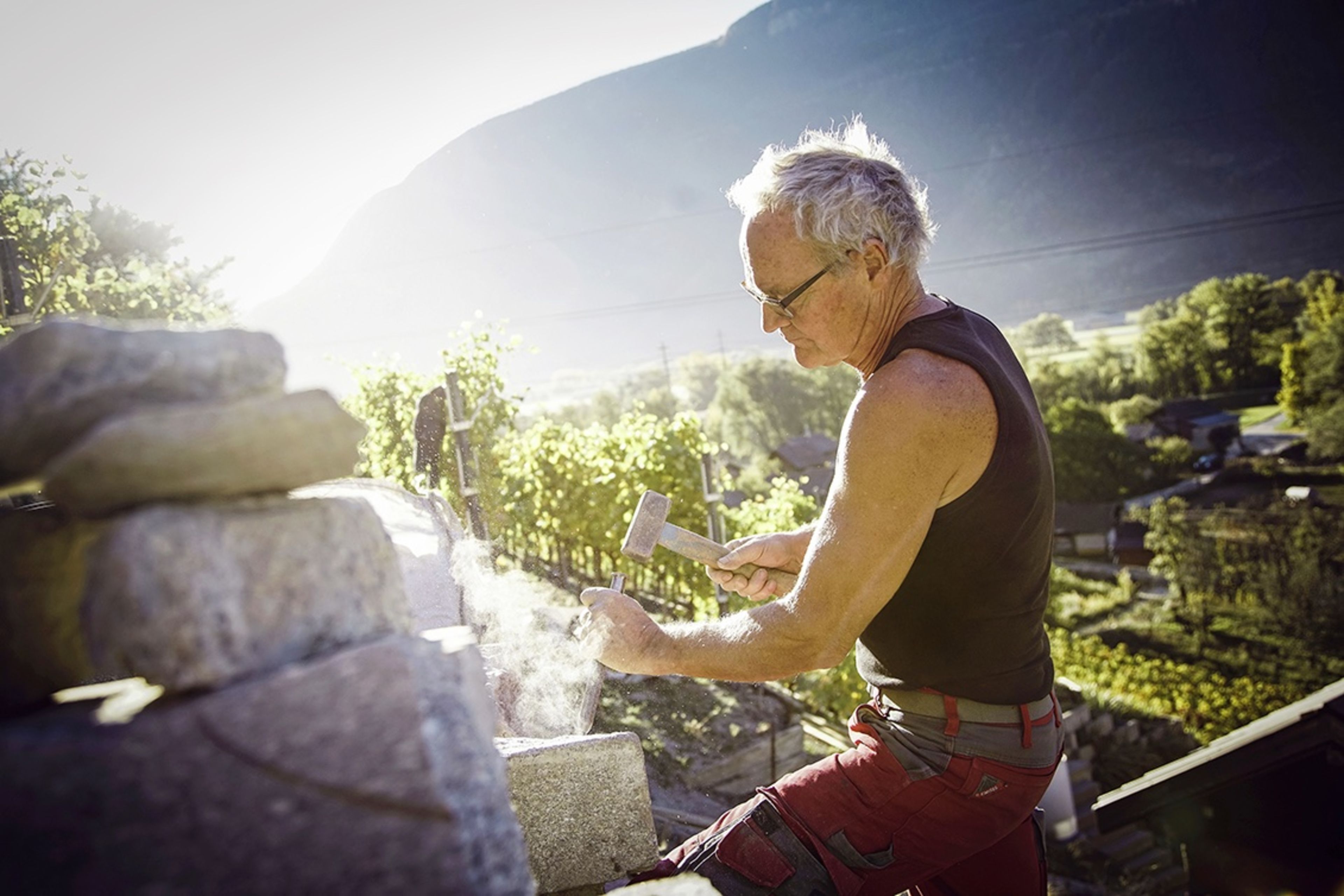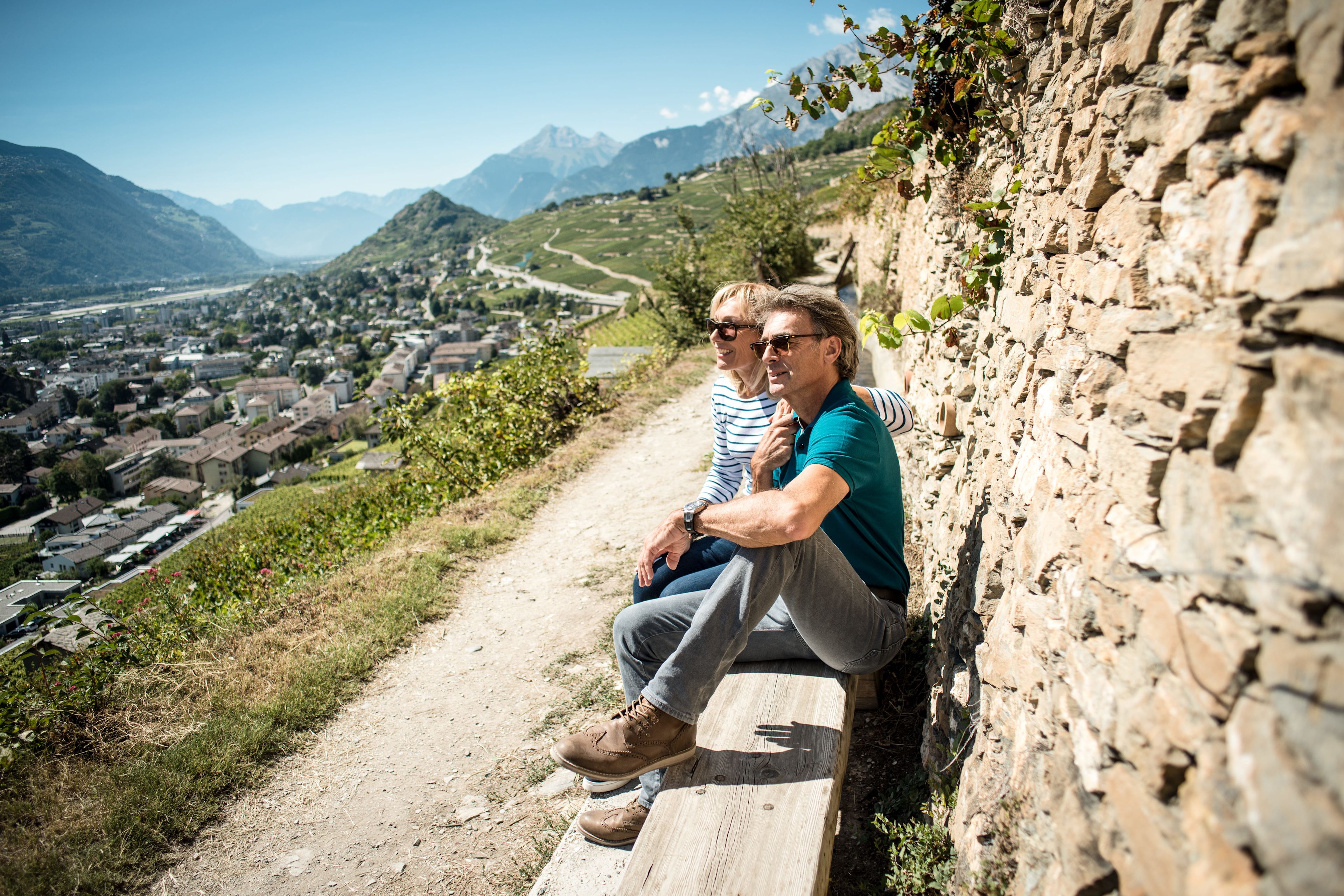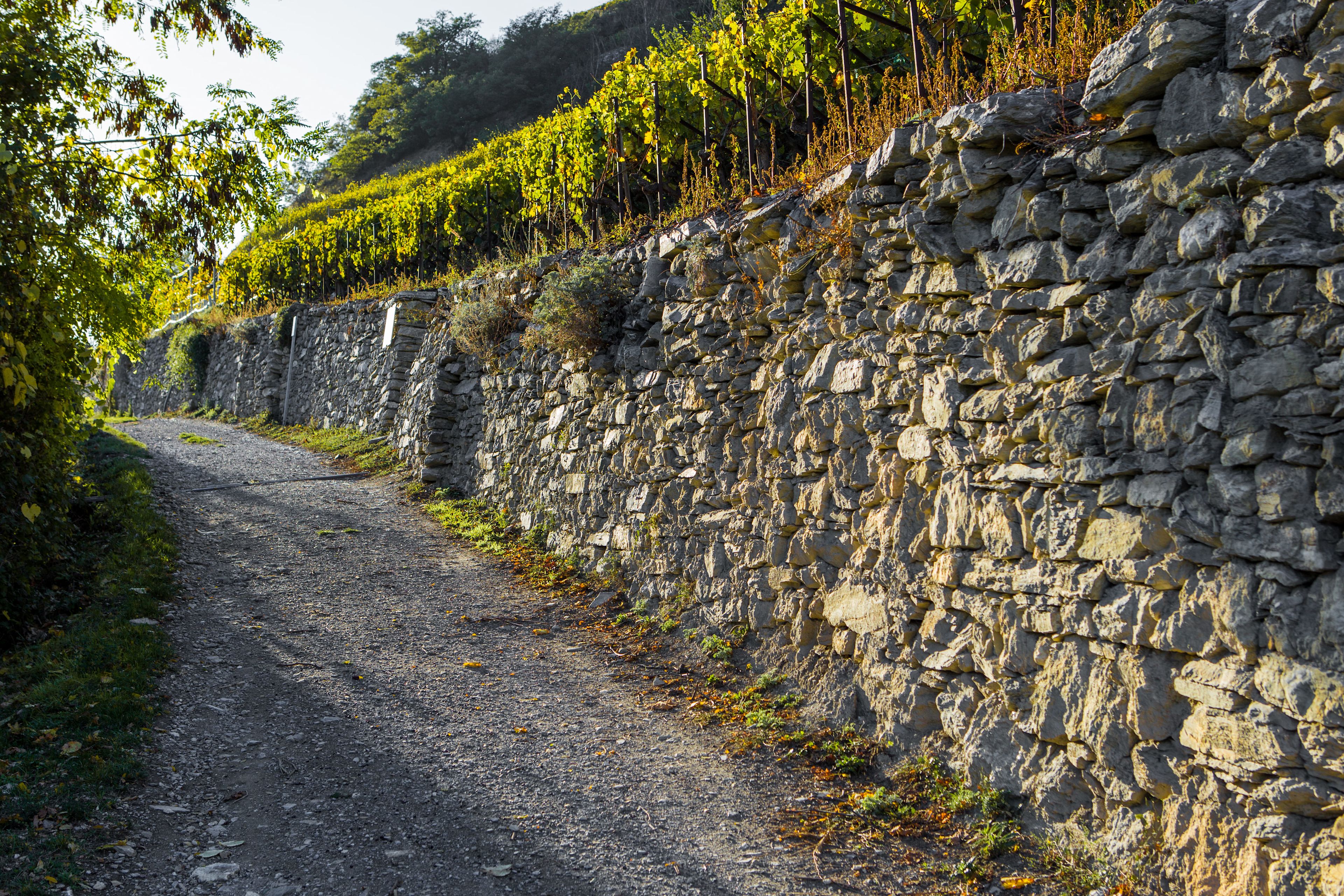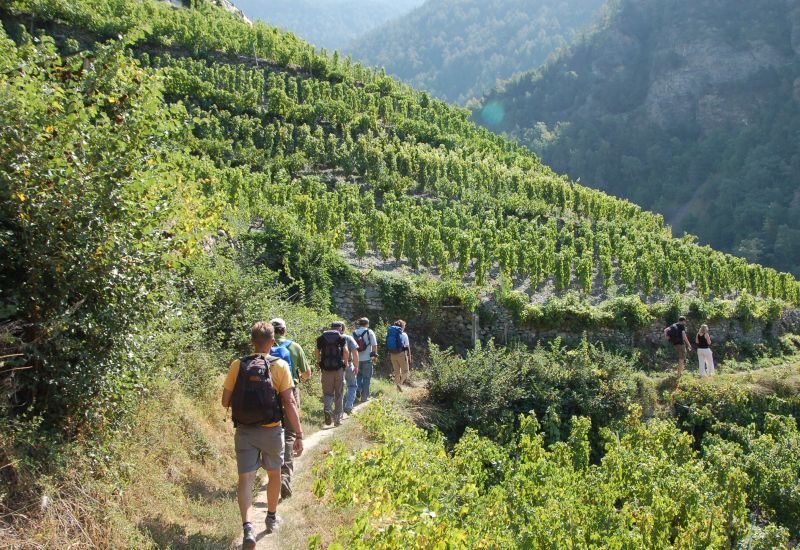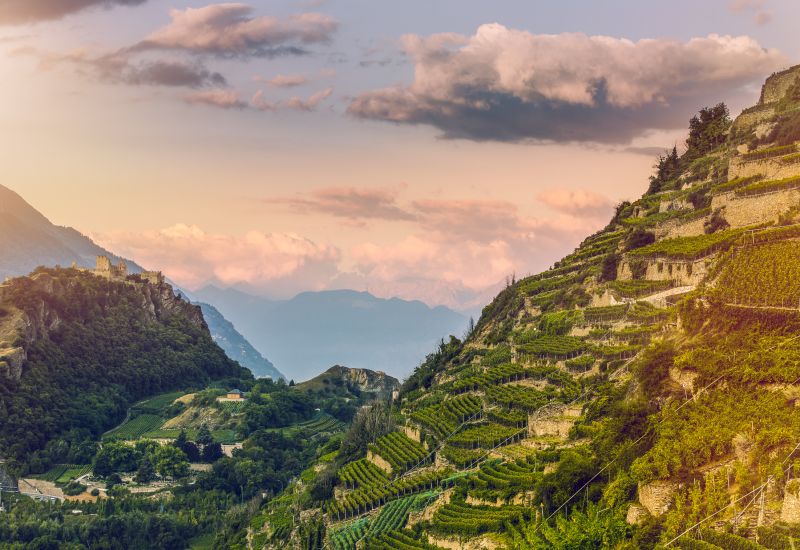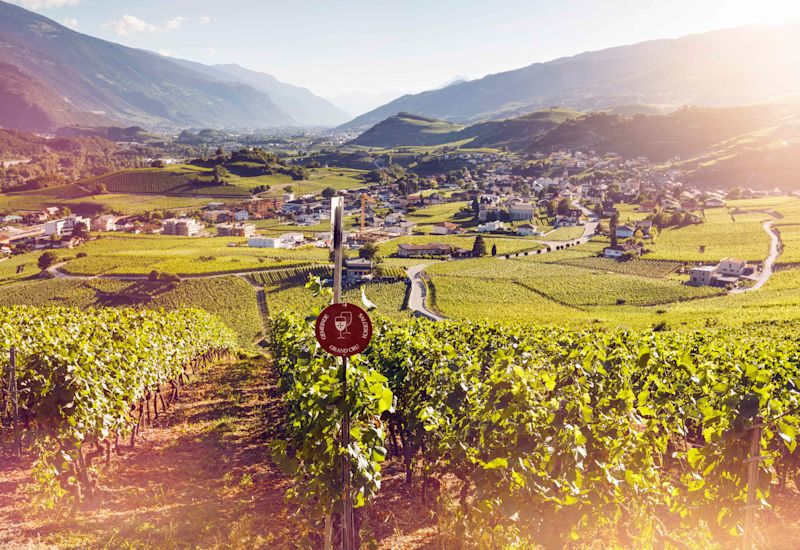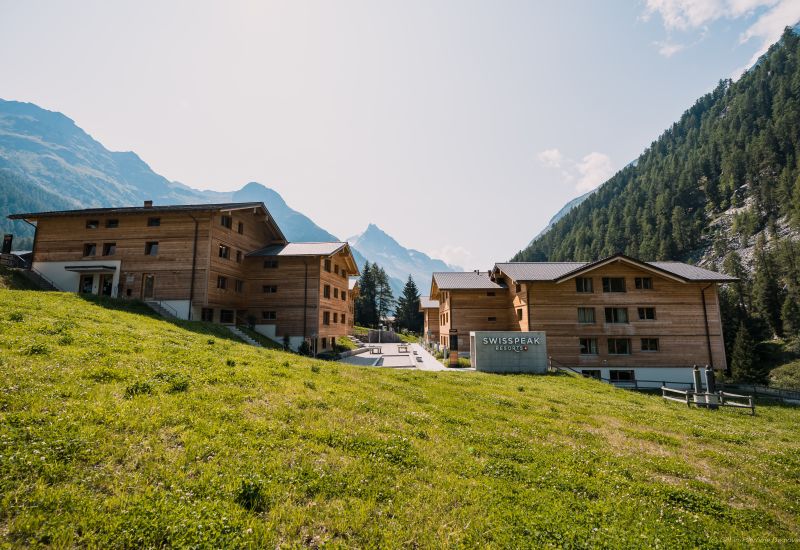Valais cultural heritage
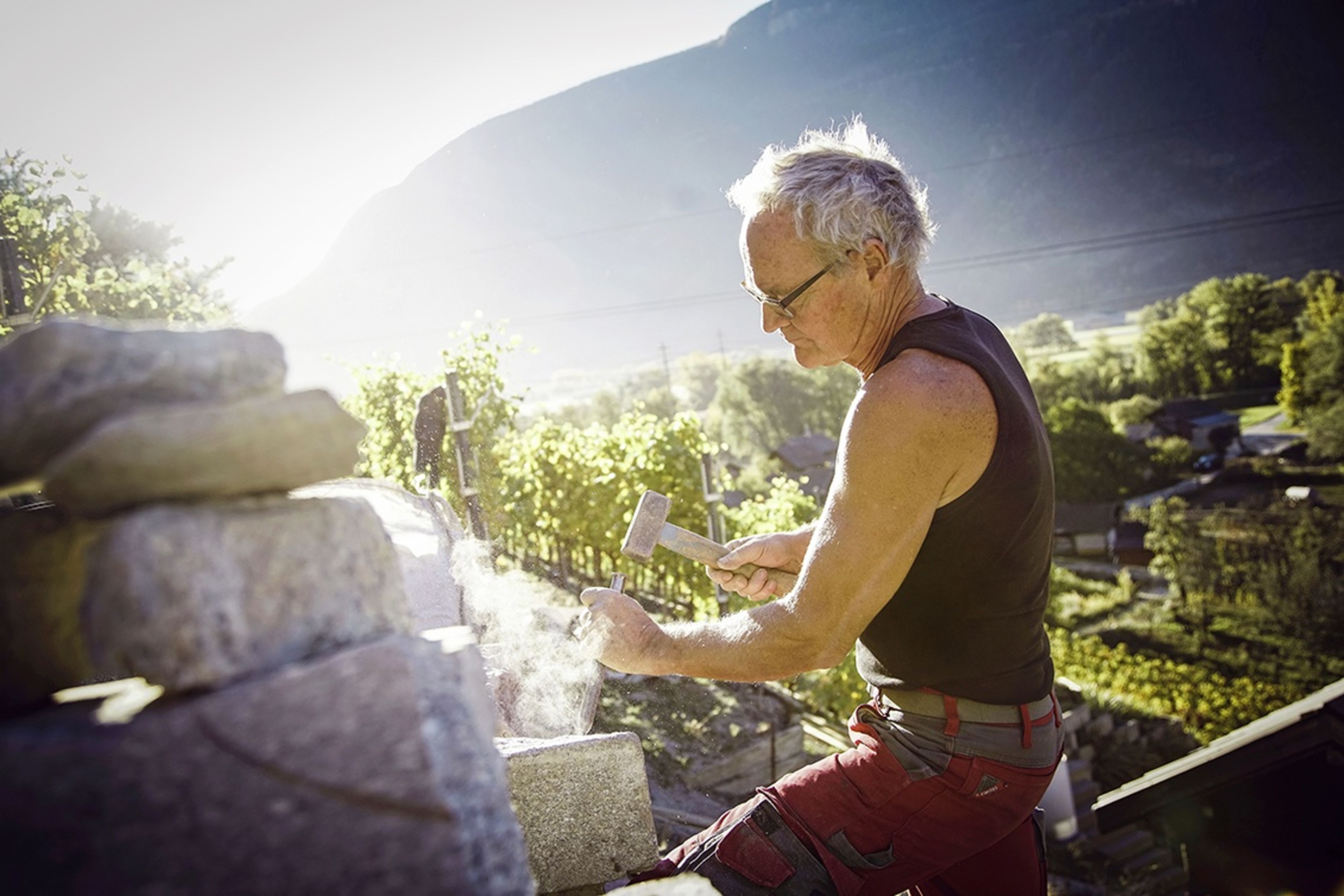
Without dry-stone walls, there would be no wine – a finding as surprising as it is intriguing. Dry-stone walls stand the test of time solely thanks to the expert arrangement of the stones.
The tallest are close to 20 metres high. Standing proudly in the surroundings of Sion, they leave a distinctive mark on the landscape of the Rhône’s right bank. Their little brothers in Upper Valais are less imposing and generally unable to compete. The technique that underpins the building of dry-stone walls is an ancient one and the remains of terraces erected between 800 and 700 BC have been documented in the Jerusalem area. While several dry-stone walls in Valais date from the 17th century, most are 100 to 150 years old.
These structures were introduced in order to work the land of the steep, sun-drenched hillsides and protect the cultivated slopes from erosion. The dry-stone walls that stand in Valais owe their longevity solely to the skilful arrangement of the stones. No mortar or any type of adhesive is used. While the highest dry-stone wall in Europe, the Cotzette near Sion, is built on a rock using a slightly different technique, every other wall in Valais follows the traditional building method.
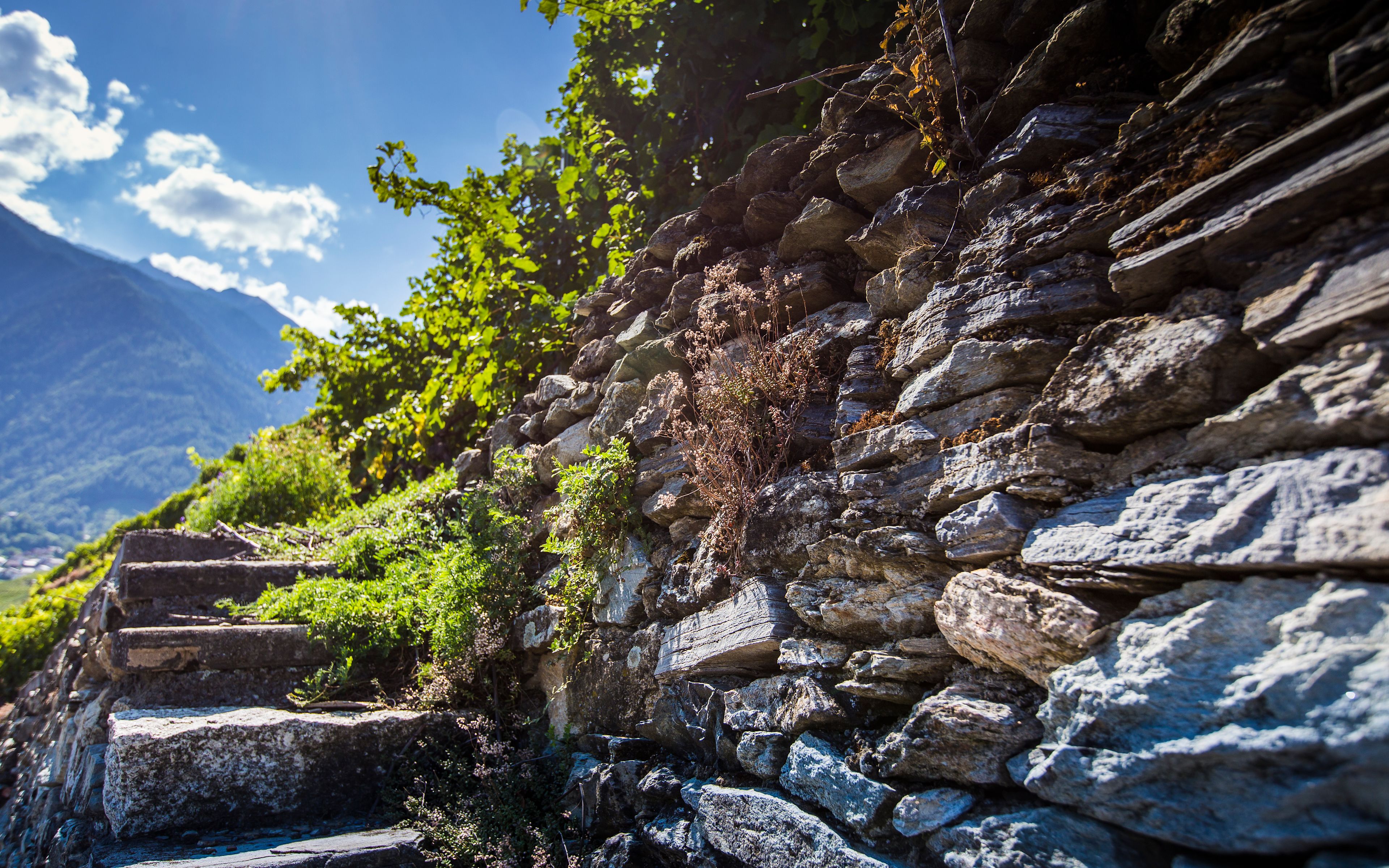
Despite being remarkably stable and far more durable than rigid concrete constructions – unless rain and landslips decide otherwise – they also require maintenance. Beat Locher is an expert in dry-stone walling. “The difficulty is in carefully selecting and piecing together the stones available,” he explains. “A well-trained eye and spatial skills are vital, while having a wealth of experience is paramount.” The only tools a dry-stone waller needs are a paving hammer, a mallet, a pick and a chisel. “Experienced wall builders combine dry-stone walling techniques with the skills of stonemasons,” explains Beat Locher. Just one glance is enough for him to determine if a wall was built by professionals, even if it is centuries old. The structures that he is so passionate about attest to a struggle for survival, clinging to the smallest parcel of land. Dry-stone walls leave their mark on one of the most beautiful cultural landscapes in Switzerland. It is estimated that there are 3,000 kilometres of walls, encircling approximately 1,500 hectares of vineyards.
Text: Monique Ryser Photo rights: Marco Schnyder
Published: June 2023
Specially selected single trails through Valais
Next story
